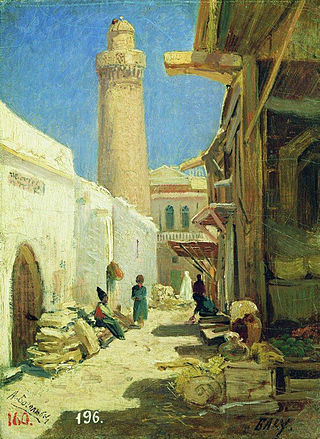
Greenwich Mean Time (GMT) is the local mean time at the Royal Observatory in Greenwich, London, counted from midnight. At different times in the past, it has been calculated in different ways, including being calculated from noon; as a consequence, it cannot be used to specify a particular time unless a context is given. The term "GMT" is also used as one of the names for the time zone UTC+00:00 and, in UK law, is the basis for civil time in the United Kingdom.

An hour is a unit of time historically reckoned as 1⁄24 of a day and defined contemporarily as exactly 3,600 seconds (SI). There are 60 minutes in an hour, and 24 hours in a day.

Noon is 12 o'clock in the daytime. It is written as 12 noon, 12:00 m., 12 p.m., 12 pm, or 12:00 or 1200 . Solar noon is the time when the Sun appears to contact the local celestial meridian. This is when the Sun reaches its apparent highest point in the sky, at 12 noon apparent solar time and can be observed using a sundial. The local or clock time of solar noon depends on the date, longitude, and time zone, with Daylight Saving Time tending to place solar noon closer to 1:00pm.
The 12-hour clock is a time convention in which the 24 hours of the day are divided into two periods: a.m. and p.m.. Each period consists of 12 hours numbered: 12, 1, 2, 3, 4, 5, 6, 7, 8, 9, 10, and 11. The 12-hour clock has been developed since the second millennium BC and reached its modern form in the 16th century.

The modern 24-hour clock is the convention of timekeeping in which the day runs from midnight to midnight and is divided into 24 hours. This is indicated by the hours passed since midnight, from 00(:00) to 23(:59), with 24(:00) as an option to indicate the end of the day. This system, as opposed to the 12-hour clock, is the most commonly used time notation in the world today, and is used by the international standard ISO 8601.

A timestamp is a sequence of characters or encoded information identifying when a certain event occurred, usually giving date and time of day, sometimes accurate to a small fraction of a second. Timestamps do not have to be based on some absolute notion of time, however. They can have any epoch, can be relative to any arbitrary time, such as the power-on time of a system, or to some arbitrary time in the past.

During British Summer Time (BST), civil time in the United Kingdom is advanced one hour forward of Greenwich Mean Time (GMT), in effect changing the time zone from UTC±00:00 to UTC+01:00, so that mornings have one hour less daylight, and evenings one hour more.

Philippine Standard Time, also known as Philippine Time (PHT), is the official name for the time zone used in the Philippines. The country only uses a single time zone, at an offset of UTC+08:00, but has used daylight saving time for brief periods in the 20th century until July 28, 1990.
Different conventions exist around the world for date and time representation, both written and spoken.
The time zone in Ethiopia is East Africa Time (EAT) (UTC+03:00). The IANA time zone database identifier is Africa/Addis_Ababa.
Date and time notation in Canada combines conventions from the United Kingdom, conventions from the United States, and conventions from France, often creating confusion. The Government of Canada specifies the ISO 8601 format for all-numeric dates. It recommends writing the time using the 24-hour clock (04:39) for maximum clarity in both Canadian English and Canadian French, but also allows the 12-hour clock (4:39 a.m.) in English.
Date and time notation in the United States differs from that used in nearly all other countries. It is inherited from one historical branch of conventions from the United Kingdom. American styles of notation have also influenced customs of date notation in Canada, creating confusion in international commerce.
France most commonly records the date using the day-month-year format with an oblique stroke or slash as the separator with numerical values. The 24-hour clock is used to express time, using the letter h as the separator in between hours and minutes.
In Poland, the official system for representing dates and times follows the international ISO 8601 standard. However, in less official use, other conventions prevail, such as the day-month-year order and several Polish language abbreviations.
Date and time notation in Sweden mostly follows the ISO 8601 standard: dates are generally written in the form YYYY-MM-DD. Although this format may be abbreviated in a number of ways, almost all Swedish date notations state the month between the year and the day. Months are not capitalised when written. The week number may also be used in writing and in speech. Times are generally written using 24-hour clock notation, with full stops as separators, although 12-hour clock notation is more frequently used in speech.
Date and time notation in the United Kingdom records the date using the day–month–year format. The time can be written using either the 24-hour clock (23:59) or the 12-hour clock (11:59 p.m.).
Date and time notation in Italy records the date using the day–month–year format. The time is written using the 24-hour clock (13:21); in spoken language and informal contexts the 12-hour clock is more commonly adopted, but without using "a.m." or "p.m." suffixes (1:21).





